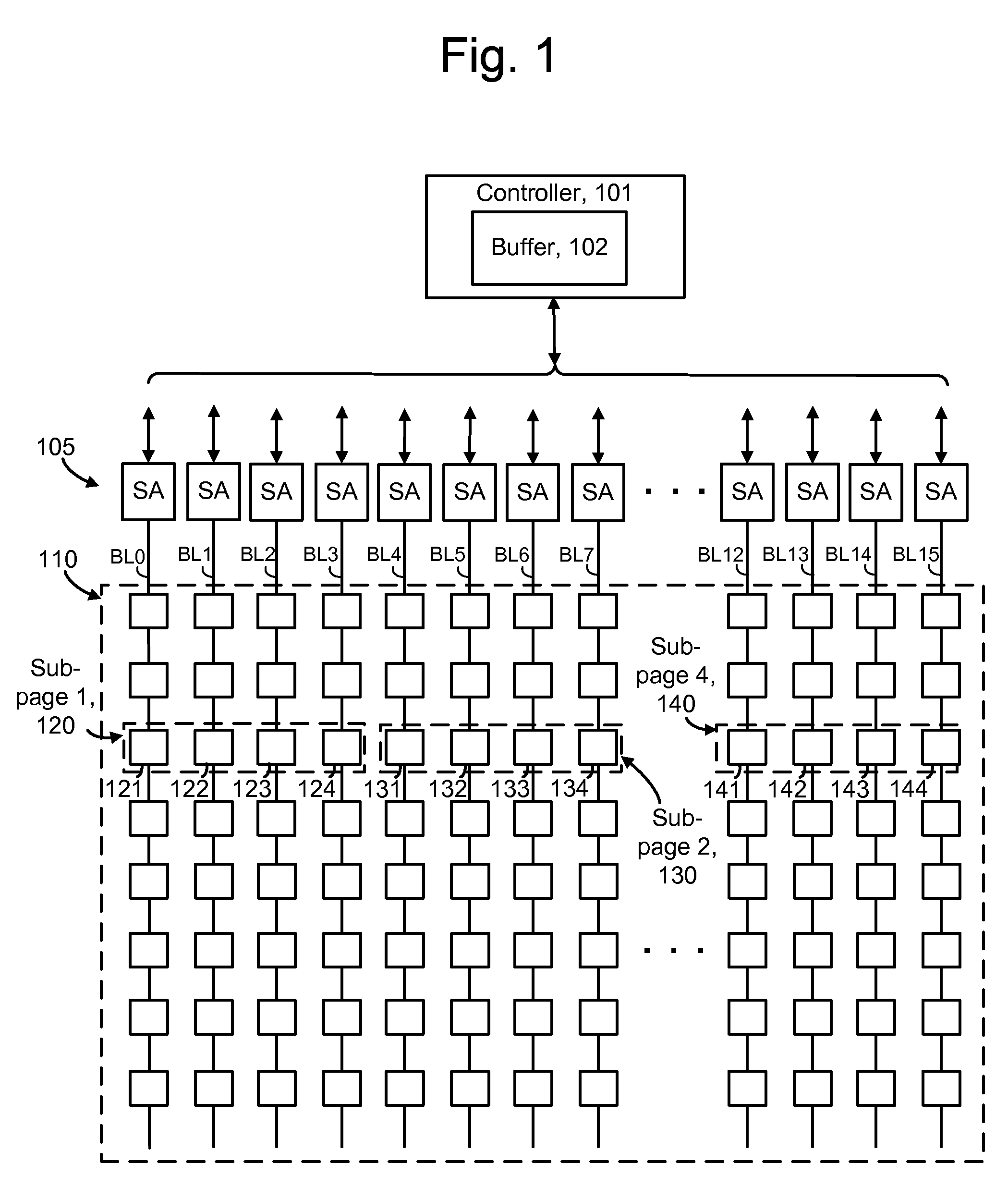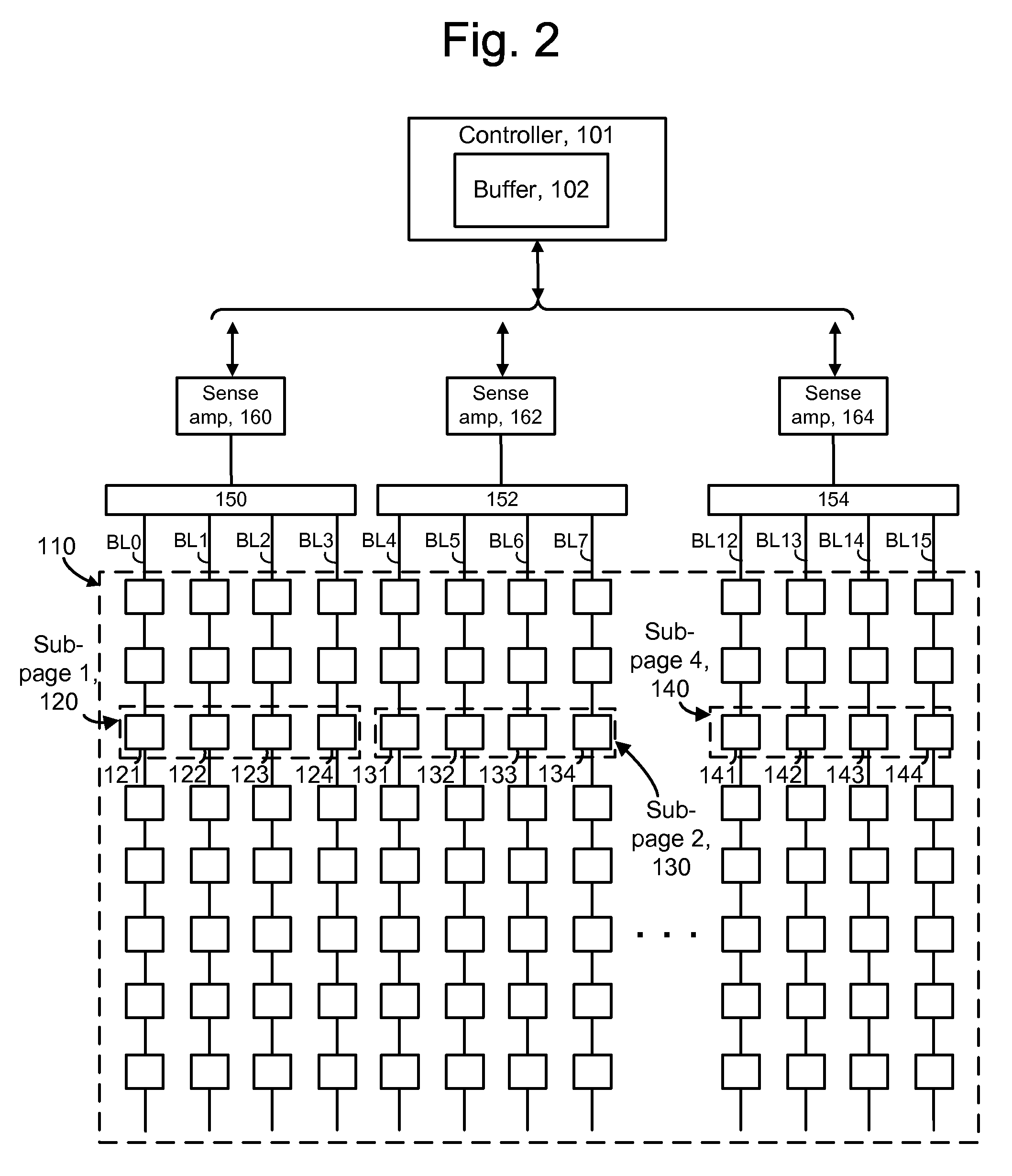Adjustable read latency for memory device in page-mode access
a memory device and page-mode access technology, applied in the field of memory devices, can solve problems such as the mismatch between the internal read speed and the read speed of the external host, and achieve the effect of minimizing the latency time of the memory devi
- Summary
- Abstract
- Description
- Claims
- Application Information
AI Technical Summary
Benefits of technology
Problems solved by technology
Method used
Image
Examples
Embodiment Construction
[0027]The present invention provides a method for minimizing latency time in a memory device during a read operation.
[0028]FIG. 1 depicts a set of storage elements and sense amps. A set of storage elements 110 includes a number of storage elements arranged in columns, where each column is coupled to a sense amplifier (SA) in a set of sense amps 105 via a respective bit line (BL0-BL15). The sense amplifiers communicate with a controller 101 and buffer 102 of the memory device. For example, each column of storage elements may be connected in series. The storage elements or memory cells may include non-volatile memory (including NAND and NOR flash memory) or volatile memory (including DRAM). In another approach, each column has only one storage element. Control lines such as word lines (not shown) may communicate with each row of storage elements, such as to provide a control gate voltage to the storage elements which are selected for a read operation. Further, memory devices having on...
PUM
 Login to View More
Login to View More Abstract
Description
Claims
Application Information
 Login to View More
Login to View More - R&D
- Intellectual Property
- Life Sciences
- Materials
- Tech Scout
- Unparalleled Data Quality
- Higher Quality Content
- 60% Fewer Hallucinations
Browse by: Latest US Patents, China's latest patents, Technical Efficacy Thesaurus, Application Domain, Technology Topic, Popular Technical Reports.
© 2025 PatSnap. All rights reserved.Legal|Privacy policy|Modern Slavery Act Transparency Statement|Sitemap|About US| Contact US: help@patsnap.com



